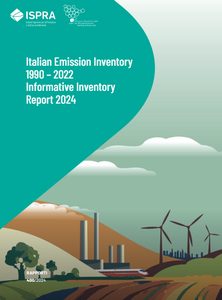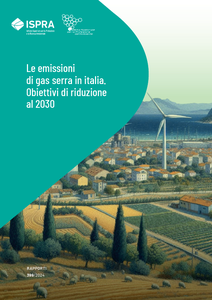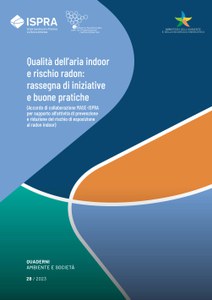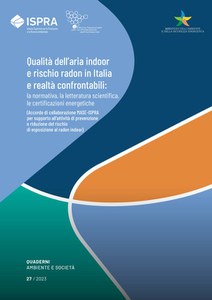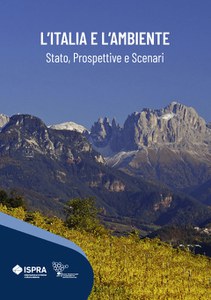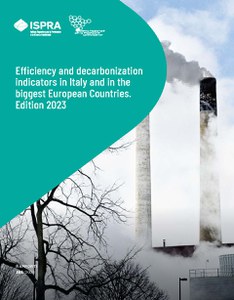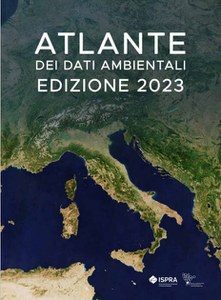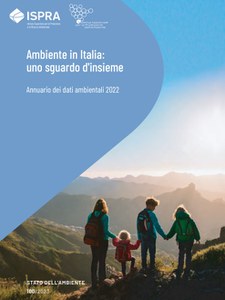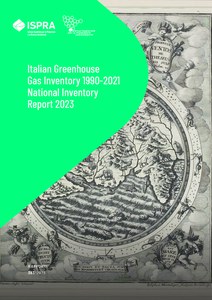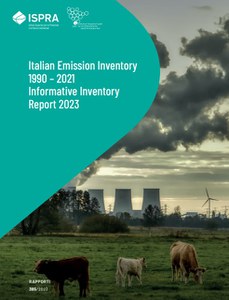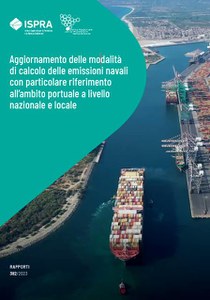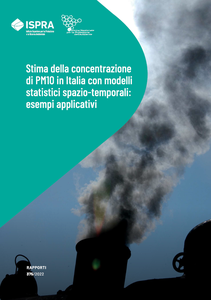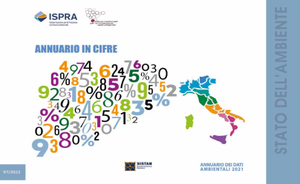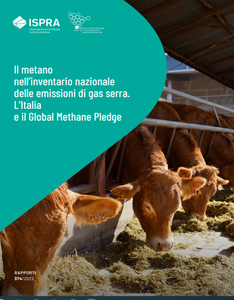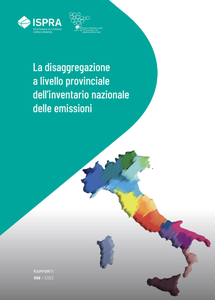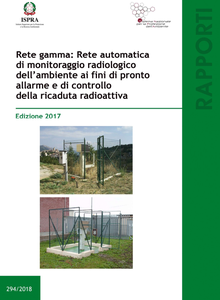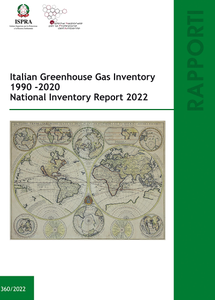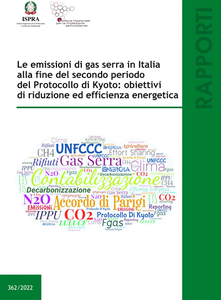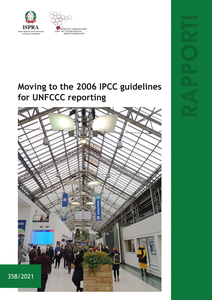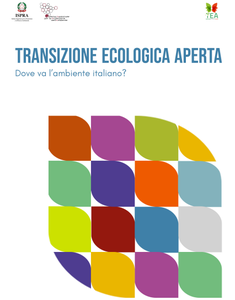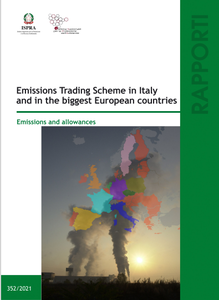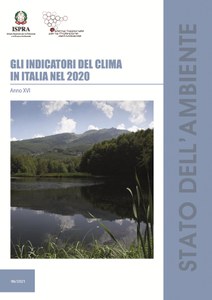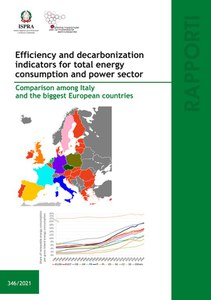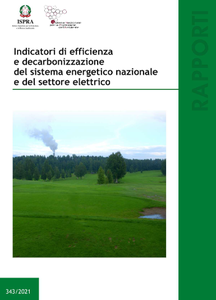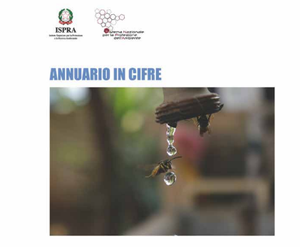Publications
Italian Emission Inventory 1990-2022. Informative Inventory Report 2024
The report describes the reporting of emissions of transboundary substances that Italy officially communicates in accordance with the requirements of the United Nations Economic Commission for Europe Convention on Long Range Transboundary Air Pollution (CRLTAP/UNECE) and relevant Protocols.
Greenhouse gas emissions in Italy. Reduction targets for 2030
The report describes the greenhouse gas emissions and removals in Italy, based on the data officially transmitted in accordance with the provisions of the United Nations Framework Convention on Climate Change (UNFCCC), and the Governance of the Energy Union and Climate Action of the European Union.
Italian Greenhouse Gas Inventory 1990-2022. National Inventory Report 2024
The report describes the reporting of emissions of greenhouse gases that Italy officially communicates in accordance with the requirements of the United Nation Convention of Climate Change (UNFCCC), and the European Union’s Greenhouse Gas Monitoring Mechanism.
Indoor air quality and radon risk: review of initiatives and best practices
This Booklet presents a survey of the main initiatives and best practices concerning the promotion of indoor air quality in public and private buildings, with special attention on school buildings. These initiatives include research projects, awareness actions and best practices aimed at improving indoor air quality in buildings, with a focus on initiatives related to indoor radon and interventions to reduce the associated risk.
Indoor air quality and radon risk in Italy and comparable realities: legislation, scientific literature, energy certifications
Radon, classified by the WHO and IARC as a Group 1 human carcinogen, is the second leading cause of lung cancer death after smoking. Under specific conditions, it tends to accumulate in indoor living environments, posing a significant health risk. Occupancy in inadequately designed and constructed buildings with unsuitable materials, and cases where management and maintenance are not performed correctly and consistently, can lead to adverse health effects not only for radon risk but also for elevated levels of chemical and microbiological agents
ITALY and ENVIRONMENT: Status, Prospects and Scenarios
The new ISPRA report offers citizens, technicians, researchers, observers, and policy makers an accurate analysis of the state of the environment in Italy, considering the main European economic-environmental strategies (Green Deal, 8 th EAP).
Efficiency and decarbonization indicators in Italy and in the biggest European Countries – Edition 2023
National trends of energy and economic indicators have been analysed in relation to greenhouse gas emissions and energy consumption. Particular attention was paid to the power sector, one of the main players in the national energy system. The role of driving factors for GHG emission trends has been analyzed, such as economic growth, fossil and renewable energy, transformation efficiency, carbon and energy intensities. Regarding power sector, the emission factors of greenhouse gases have been elaborated. Efficiency and decarbonization indicators have been compared in Italy and in the biggest European Countries. The power sector performances of main European countries have been compared for fuel mixes, transformation efficiencies, and GHG emission factors.
Atlas of Environmental Data. 2023 edition
The Atlas of environmental data, a volume that ISPRA publishes for the first time, offers an overview of the main environmental data. It provides cartographic representations showing the spatial distribution of the main environmental information which, together with graphs, tables and texts, illustrate the state of the entire national territory.
Environment in Italy: an overview. Environmental Data Yearbook 2022
Environment in Italy: an overview. Environmental Data Yearbook 2022 is a statistical report produced by ISPRA with the aim of providing policy makers, public administrators, technicians and citizens with official information on the state of the environment in our country.
Italian Greenhouse Gas Inventory 1990-2021. National Inventory Report 2023
The report describes the reporting of emissions of greenhouse gases that Italy officially communicates in accordance with the requirements of the United Nation Convention of Climate Change (UNFCCC), the Kyoto Protocol, and the European Union’s Greenhouse Gas Monitoring Mechanism.
Italian Greenhouse Gas Emissions: emissions reduction target and scenarios
The report describes the greenhouse gas emissions and removals in Italy, based on the data officially transmitted in accordance with the provisions of the United Nations Framework Convention on Climate Change (UNFCCC), and the Mechanism of Greenhouse Gas Monitoring of the European Union.
Italian Emission Inventory 1990-2021. Informative Inventory Report 2023
The report describes the reporting of emissions of transboundary substances that Italy officially communicates in accordance with the requirements of the United Nations Economic Commission for Europe Convention on Long Range Transboundary Air Pollution (CRLTAP/UNECE) and relevant Protocols.
Update of the navigation emission estimates in ports both at national and local level
The report contains the results of a project aimed at collecting data on navigation traffic in a few Italian harbors. A model has been used to calculate emissions estimate. A huge amount of data is necessary to perform a precise evaluation of emissions from the shipping sector.
Estimation of PM10 concentration in Italy with spatio-temporal statistical models: application examples
The report describes the use of a Bayesian hierarchical space-time model for the high spatial resolution estimate (1km x 1km) of daily PM10 concentrations, in order to give a demonstrative overview of possible applications. The model was applied, separately for each month, to the PM10 concentrations measured since 2013 to 2020 by the Italian regional air quality monitoring networks.
The Yearbook in figures
Environmental Data Yearbook 2021
Methane in the Italian greenhouse gas Inventory L’Italia e il Global Methane Pledge
Walking through the environment
The disaggreagation at the provincial level of the national inventory of emissions
This report illustrates the activity carried out to disaggregate on a provincial basis the emissions of pollutants and greenhouse gases estimated in the national emissions inventory prepared by ISPRA. The estimates were obtained using a top-down approach and calculated for the years: 1990 - 1995 - 2000 - 2005 - 2010 - 2015 - 2019.
Gamma network: Automatic network for the radiological monitoring of the environment for the purpose of early warning and control of the radioactive fall - Edition 2017
Ispra has set up a monitoring radiometric network able to provide to Cevad, according to the provisions of art. 123 of Legislative Decree 230/95, the situation of environmental radioactivity on the national territory in real time.
Italian Greenhouse Gas Inventory 1990-2020. National Inventory Report 2022
The report describes the reporting of emissions of greenhouse gases that Italy officially communicates in accordance with the requirements of the United Nation Convention of Climate Change (UNFCCC), the Kyoto Protocol, and the European Union’s Greenhouse Gas Monitoring Mechanism.
Italian Greenhouse Gas Emissions at the end of Kyoto Protocol second commitment period: emissions reduction target and energy efficiency
The report describes the greenhouse gas emissions and removals in Italy, at the end of the second period of the Kyoto Protocol, based on the data officially transmitted in accordance with the provisions of the United Nations Framework Convention on Climate Change (UNFCCC), the Kyoto Protocol and the Mechanism of Greenhouse Gas Monitoring of the European Union
Efficiency and decarbonization indicators in Italian energy and power sector
National trends of energy and economic indicators have been analyzed in relation to greenhouse gas emissions and energy consumption. Particular attention was paid to the electricity sector, one of the main players in the national energy system. The role of factors determining greenhouse gas emission trends has been analyzed, such as economic growth, fossil and renewable fuels composition, transformation efficiency, and fossil fuel emission factors. With regard to electricity sector, the emission factors of greenhouse gases and other atmospheric contaminants have been elaborated.
Moving to the 2006 IPCC Guidelines for UNFCCC reporting
In the framework of the international climate negotiations under the United Nations Framework Convention on Climate Change (UNFCCC), transparency arrangements play an essential role. Information gathered are critical to driving the increased action required to meet the goal of limiting global warming to well below 2 degrees, pursuing efforts to 1.5, as well as to build confidence in the system and mutual trust among nations.
Open Ecological Transition
Emissions Trading Scheme in Italy and in the biggest European Countries
The report analyses the GHG emissions from the stationary installations belonging to the EU emissions trading system (EU-ETS). The analysis of energy consumption has been carried out for the Italian activity sectors. The results show the decrease of emissions from ETS sectors since 2005 and the decreasing emission factors for many sectors mainly due to the increasing share of natural gas and bioenergy, mostly in the power sector.
Climate indicators in Italy 2020 - Edition XVI
The 16th report "Gli Indicatori del Clima in Italia" describes the Italian climate in the year 2020 and updates the estimate of climate variations in the last few decades. It is based on climate data, indices and indicators derived from the "National System for the collection, processing and dissemination of climate data" ( SCIA ), developed by ISPRA in collaboration with national and regional meteorological monitoring networks.
Efficiency and decarbonization indicators for total energy consumption and power sector. Comparison among Italy and the biggest European countries
Efficiency and decarbonization indicator trends have been analyzed in relation to energy consumption and greenhouse gas emissions. Italian indicators are compared with those of the largest European countries.
Efficiency and decarbonization indicators in Italian energy and power sector
The Yearbook in figures
Environmental Data Yearbook 2020
Proposed indicators for domestic MRV purposes and tracking progress of NDCs
The overall objective of this report is to provide countries with relevant examples of indicators, which may be used in pursuing domestic monitoring tasks as well as in reporting on progress towards implementation and achievement on Parties’ NDCs.

